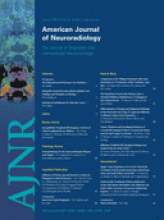Have you ever had a dream, Neo, that you were so sure was real?
Morpheus from The Matrix, Warner Bros, 1999
The saga of the Matrix coil in the neuroradiology world has some parallels to the cinematic saga of the same name. Both stories are about an entity called the Matrix. In each story, the Matrix created a very convincing illusion. In the end, the humans concerned with finding the truth succeed in breaking down the illusion. In this issue of American Journal of Neuroradiology, we are presented with yet another sequel in the series of publications regarding cerebral aneurysms treated with polyglycolic/polylactic acid (PGLA)-coated coils (Matrix; Boston Scientific, Natick, Mass)—that is, Matrix Reloaded. This latest publication is noteworthy because it is a very large multicenter series of patients. The results of this publication are disappointing in that they confirm previous findings,1–8 suggesting that PGLA-coated coils do not lead to a decrease in angiographic recurrence rates relative to platinum coils.
We are now awaiting the results of the Matrix and Platinum Science (MAPS) trial, which is a multicenter randomized prospective trial comparing aneurysms treated with Matrix coils with those treated with bare platinum coils. This should be the final chapter of the Matrix coil saga, in that the trial should finally put to rest the question of whether Matrix coils reduce cerebral aneurysm recurrences. As with the cinematic Matrix trilogy, we should hope that there is a dramatic finish that might be called the Matrix Revolution. However, previous publications in this serial saga have been disappointing and uninspiring, and we very well may expect the same from the final episode of the Matrix coil.
References
- Copyright © American Society of Neuroradiology







